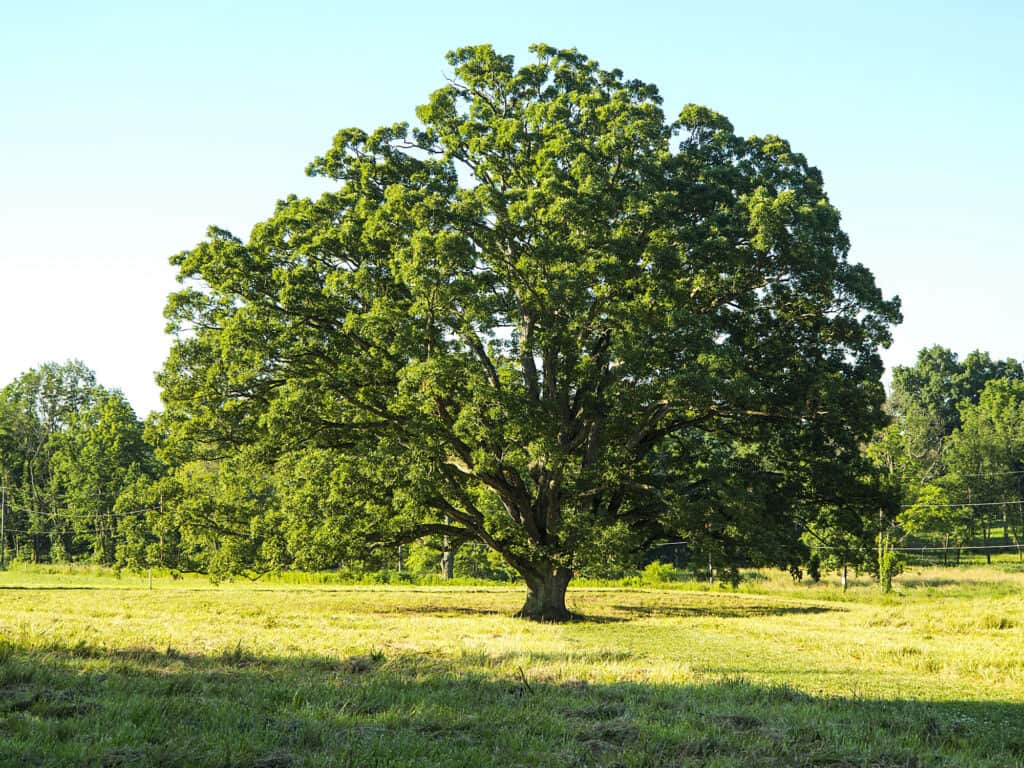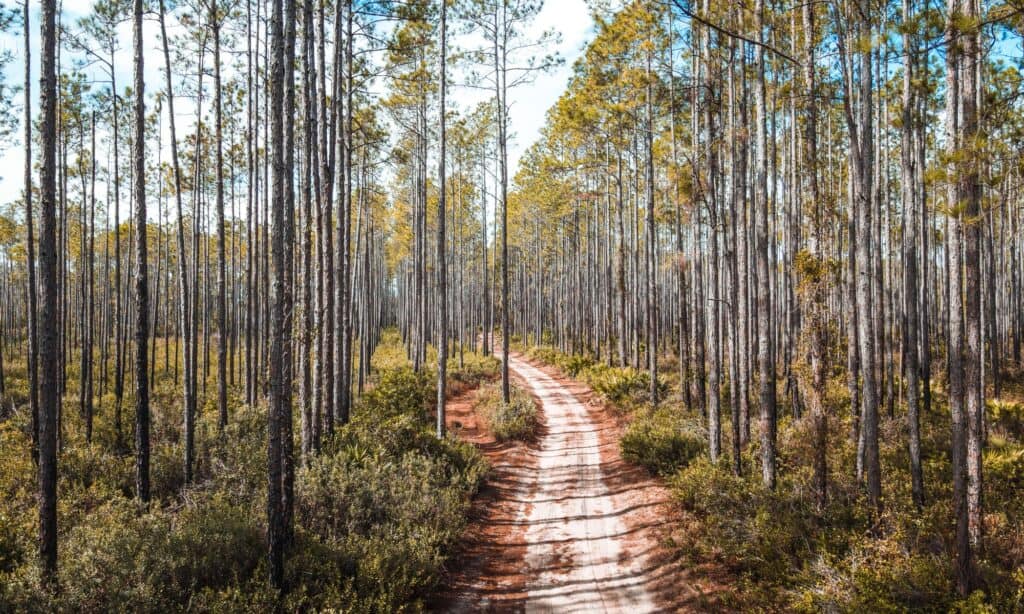Our planet’s trees are one of the most important plants. As a matter of fact, they play a crucial role in so many aspects of our lives. For example, trees contribute to our air quality by absorbing pollutants and releasing oxygen. Furthermore, they also play a crucial role in absorbing water to prevent natural disasters such as floods and landslides.
The trees in the world are also home to many species of insects, fungi, mosses, mammals, and plants. Clearly, trees are crucial to the sustainability of our planet because of their sturdy reliability. So, have you ever wondered how many trees are in the world? This article will take a closer look at the number of trees on our planet and how they affect our environment.
How Many Trees Are In The World?

There are more than 3 trillion trees on Earth today.
©iStock.com/Cris Andrei
Today, deforestation and its devastating effects are hot-button issues. Deforestation has become a serious problem since the 1950s, when it accelerated dramatically. So how many trees are in the world right now? Even though it is impossible to know exactly how many trees are in the world at any given time, there are ways to estimate the number fairly accurately. Satellite imaging is the key to all of this. It is estimated that there are 3.04 trillion trees worldwide, according to a study published in the journal Nature.
Another way to put it is that there are 422 trees for every person on Earth. Although this might seem like an extremely huge number, it actually isn’t when you consider how many fewer trees there are now. In ancient times, there were 6 trillion trees, roughly double the number of trees today. According to most historians, the world’s forests covered 6 billion hectares before people arrived. Still, we are definitely making some great progress as tree planting initiatives continue to grow.
So, how many trees were in the world around 100 years ago? It may sound unbelievable to you.
How Many Trees Were In The World Just 100 Years Ago?

In the days before man, there were six trillion trees on Earth, twice what there are now.
©iStock.com/photosbysixfive
As we mentioned above, the planet was covered in trees before man arrived. There were a lot of trees and forests covering the entire landscape. Approximately 3 billion hectares of forest cover remain on the planet today, a fraction of what once covered the globe. At one point, it was estimated that only 70 million trees remained.
There were a lot of developments occurring throughout the United States during the early 1920s, which caused the timber industry to grow rapidly. As a result, it became one of the major drivers of deforestation in the United States. In addition, there were no forest management laws or programs in place at this time. As a result, many forests were destroyed, especially on the East Coast, and no trees were planted in their place. Since the United States is home to 8 percent of the world’s forests, this was a big deal.
In recent years, people have begun to notice the negative effects of having fewer trees on the planet. As a result of tree planting efforts that began in the 1950s, the public is more aware of the importance of trees and forests. That is why there are so many more trees now than there were 100 years ago.
With the knowledge that there are more trees today than 100 years ago, let us investigate which countries have the most trees.
Which Countries Have The Most Trees?

Approximately a fifth of all trees on Earth is located in Russia.
©iStock.com/Ozbalci
Even though there are roughly 3 trillion trees on the planet, that doesn’t mean they are evenly distributed. There are only five countries that make up nearly half of the world’s forests. These countries are Brazil, Canada, China, Russia, and the USA. Meanwhile, two-thirds of all trees are in just ten countries such as Indonesia, Peru, India, and Australia. For the most part, the larger a country is, the more trees it is likely to have.
In terms of having the most trees in the world, Russia definitely takes the top spot. With 642 billion trees, Russia is the country with the most trees! However, don’t worry, North America takes second place thanks to Canada. In Canada, there are almost 318 billion trees, which cover around 40% of the country’s land. As a result, it should come as no surprise to any of you that Canada’s forests represent 30% of the entire world’s forests! However, in terms of the number of native tree species, Brazil, Columbia, and Indonesia have the highest numbers.
The number of trees in these countries is impressive, but what about the density of trees? Let’s see which countries have the highest density of trees.
What Countries Have The Best Tree Density?
Another way to classify the number of trees on the planet is by tree density. The tree density measures how much land is covered by trees. In spite of the fact that some countries have more trees than others, that does not necessarily mean they have the best tree density. It may surprise you to learn that Sweden, Taiwan, Slovenia, French Guiana, Finland, and Equatorial Guinea have the best tree density.
Finland ranks first with 72 644 trees per square kilometer. According to studies, Finnish forests are also denser than most forests around the world. In fact, 70% of Finland is covered by trees, making it one of the most forested countries in Europe. Moreover, Finland plants 150 million trees a year, so the numbers will keep increasing as the years go by. On the other hand, in Slovenia, trees cover 60% of the land area, with 71,131 trees per square kilometer.
Can We Live Without Trees?
In a nutshell, no. In order for human life to exist, trees are absolutely essential. According to a study carried out by the Center for Global Development, if we don’t make any changes to our environmental policy, the world is expected to lose more than a million square miles of forest to deforestation by the year 2050.
The good news is that, as of 2020, there has been a dramatic drop in the rate of deforestation in most countries. This is largely due to the numerous policies implemented during the past decade. There is no doubt that trees are extremely important to the air we breathe, to biodiversity, and even to life itself! There is no doubt that a world without trees is not a sustainable one.
The photo featured at the top of this post is © Gibson Outdoor Photo/Shutterstock.com
Thank you for reading! Have some feedback for us? Contact the AZ Animals editorial team.






